|
Trasimeno
Lake Trasimeno lies between Umbria and Tuscany. framed by a gentle landscape planted with vines and olives.
Three islands surface from its waters: Maggiore and Minore close to the northern shore, and Polvese in the southeast corner. Its banks are dotted with tourist resorts, in particular Passignano, Tuoro and Castiglione del Lago. To defence its fascinating and wonderful environment the Region created, with a Regional Law, the Natural Park of Trasimeno. The lake offers countless water sports activities and is a real paradise for anglers and keens on nature.
Pike and the prized carp "in porchetta" are gourmet specialities of Lake Trasimeno. Irish lace and pillow lace add lustre to the Trasimeno's crafts.
Catch a ferry to one of the lake’s islands and visit Isola Maggiore to watch the fishermen mending their nets and women knitting lace. Visit the old romantic castle and the small church on top of the island where you may enjoy a fantastic panoramic view. Or go to Isola Polvese, a natural reserve with the ruin of an old monastery. At Oasi della Valle at San Feliciano you can watch rare local and migrant birds. Around the lake there are many interesting little towns for shopping, museums and restaurants. Before dinner have an aperitivo in one of the lake front caffes at Passignano sul Trasimeno or Castiglione del Lago watching the change of guard when the swallows return to their nests and the bats begin to draw their circles in the air. In the surrounding hills you can visit our village Castel Rigone as well as Cortona, Citta della Pieve, Paciano, Panicale and Magione.
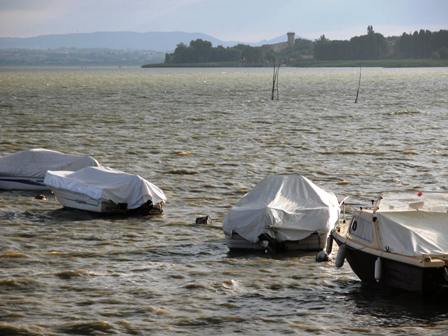
Trasimeno Lake invites you for swimming, water sports, walking in natural reserves or trips to one of its islands. Gourmet food lovers seek it out for the eel, carp, perch, trout and pike which make up the local stew, the tegamaccio...
Perugia
The area of Perugia embodies each of the distinctive characteristics of the region. The panorama ranges from pristine landscapes to incoparably beatiful historical centres.
Perugia boasts a vast historical and artistic culture, wich is composed of Etruscan, Roman, Medieval, Renaissance and Moderne influences, wich are richs its museums. Perugia and University for Foreigners that offers at the town its cosmopolitan image, celebrate, also the most important Jazz event in the world, during Umbria Jazz.
Corciano and Deruta
The centres of Corciano and Deruta are no less fascinating, with their narrow alleywais and nobile buildings.
The hills and countryside are primarily cultivated with vineyards, olive trees and grain. Artisan crafts flourish here; wrought iron, lace and majolica ware (at Deruta important is the Museo della Ceramica).
The gourmet selection of food is extremely rich, from olive oil to wine, chocolate and traditional pastries.
Assisi
Assisi, a land of Saints and religious movements, represent the heart of Umbria's spirituality. Set above a spur of Mount Subasio, which overlooks the verdant Umbrian valley in the broad basin of the Chiascio and Topino rivers, Assisi appears from a distance to be terraced with a cascade of churches, houses and bell towers. The area also includes others important towns that are true gems of art and history such as for example Bettona (with its precious Pinacoteca), Cannara and Bastia Umbra. Now as in the past, the shops in Assisi and the nearby towns display fabrics with tight, geometric embroidery representing imaginative patterns and animal's shapes ("Assisi stitch"). And in Umbrian cuisine, olive oil plays the leading role.
Spoleto
The District is an ideal starting point for those wishing to explore the most important town of central Italy. It maintains the delightful lush-green setting, the woods, the olive groves, hermitages and churches and clear spring (Campello sul Clitunno).
The spirit of Spoleto skilfully rides the ride than ever (for example the Rocca Albornoziana), like the atmosphere redolent with learning that seems to impregnate the stories of the city, only to bloom in June, when Spoleto celebrates the splendours ot its more recent traditions: "The Festival of Two Worlds".
A similar melting pot of history and tradition can be experienced in the flavours of the local cuisine, robust yet unexpectedly refined, caressed by the delicate whites and vigorous reds of an ancient enological tradition. One more reason to maintain a special memory of Spoleto's district, and even to take home some of the local homemade produce of the fertile Umbrian hills: olive oil, wine, mushrooms, sausage meats, truffles, honey and chestnuts.
Foligno - Norcia - Cascia
The district, one of the most enchanting for landscape and architecture includes important villages and towns such as Foligno, Nocera Umbra, Norcia e Cascia in the Valnerina.
Situated in the most mountainous and picturesque area of Umbria, the Valnerina is at the heart of the Mount Sibillini National Park.
Over its beatiful landscape, the Valnerina is also well know as an ideal sports tourism destination.
Norcia and Cascia are the preason headquarters for many high-ranking sports clubs, whither the velvet plains of Castelluccio have been described as the best area for paragliding training in all of Europe.
A trading crossroads since ancient times, this area is covered with villages of medieval origin; Bevagna, Montefalco, Spello, Trevi and Nocera Umbra, Norcia, Cascia. Artisan crafts flourish in this area, especially in Bevagna, which is known for its basket and hemp weaving, and in Foligno with its pipe organ restoration and leather-working activities.
The Foligno area, rich with olive groves and vineyards, boasts numerous wines whitch is the most prized in the region (Trevi).
The Valnerina is a true paradise for connoisseurs of fine foods: sausage metres, black truffles, cheeses and lentils are the main ingredients of the delicious and genuine cuisine that revolves around the typical "norcineria".
Todi
At the centre of a charming panorama, positioned on a high hilltop, lies Todi, dominating a landscape which is considered among the most beautiful and pristine in all of Umbria.
Todi, of ancient origin which we are important remains in the local museums, attract visitors for its numerous medieval lanes and alleyways, richly lined with artisan craft shops, for its renaissance churches (Tempio della Consolazione) and for its Roman's rest found all over the district (Massa Martana). The bordering towns are equally charming: Marsciano, Collazzone, Massa Martana and Monte Castello di Vibio, which is host to the smallest theatre in world (99 people). The Tuderte region boasts a tradition of gourmet cuisine which is rich with delicious, characteristic dishes : dove with drippings, sweet macaroni and fire-baked pizza.
Orvieto
At the border of Lazio, a short distance from Rome, this territory is positioned between the most important lines of communication and is, therefore, easily reached. There is a wide variety of landscapes here: green pastures, vineyards, olive groves and lush forests, all of which are reflected in the fresh water of brooks, lakes (Piediluco, Corbara).
The city of Orvieto, positioned high up on a tuff crag, dominates the landscape.
Orvieto, which was an important Etruscan centre, is rich with highly prized archaeological findings, possible to visit as it is possible to visit those of Narni.
Terni
Terni, one of Umbrian country town, is known for the Basilica of Saint Valentine and for spectacular waterfalls of the Marmore Falls, some of the many centres and areas particular interesting are Calvi, Amelia, Otricoli, Narni and Carsulae.
The artisan craft tradition is distinguished for its gold work, costumes, masks, majolica ware, wrought iron and wooden furniture.
The predominant cultivation here is olives and vineyards (which produce, in particular, the "Orvieto Classico", a white wine renowned around the world). The traditional cuisine has remained intact: game, mushrooms, truffles and "la porchetta" (roast suckling pork) are the main specialities
Città di Castello
This area, situated in the northernmost part of Umbria, bordering the Marche and Tuscany regions, is composed of various villages and towns riches of history and traditions. These villages have, over time, preserved their artistic and environmental heritage in a perfect harmony between ancient and modern, tradition and progress.
Among these towns is to be noticed Gubbio and Città di Castello with their enduring medieval walls, wich lovingly preserves the traditions and customs of their pasts. Artisan here are distinguished for their wrought iron work, "birds-eye patterned" linen, fine linen with imberline motifs and majolica ware.
The traditional cuisine is dominated by black and white truffles (white being rarer and with a stronger, more unique taste), which are an important part of market exhibitions
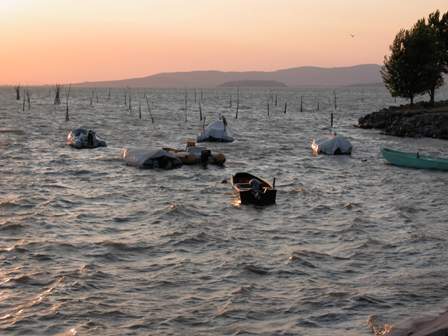
|
|
nature and culture..
Do you like wine? Why don't you make an excursione to the vineyards and taste some typical wine??
Orvieto, Torgiano, Montefalco and the area around the Lake Trasimeno are perhaps the most famous wine producing areas. Just get in your car and drive, stopping when the vineyard attracts you or the cantina sign entices you.
I listed some of the vineyards you can visit, click here..
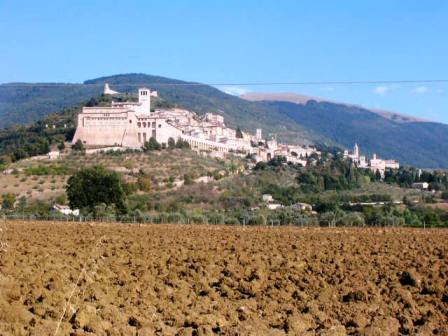
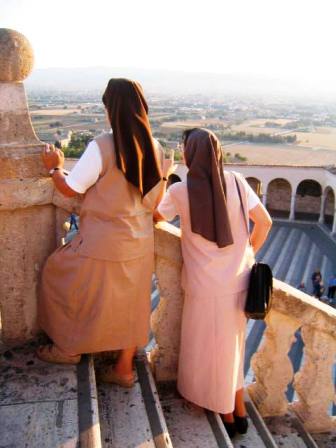
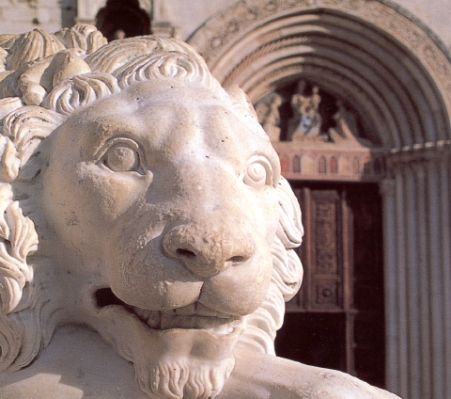
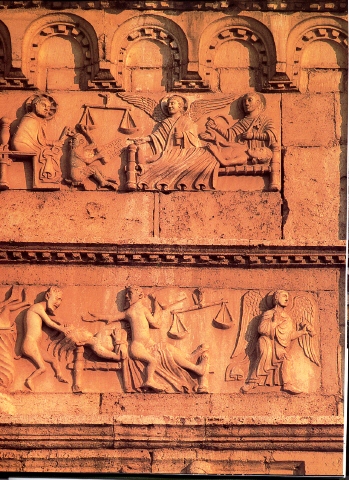
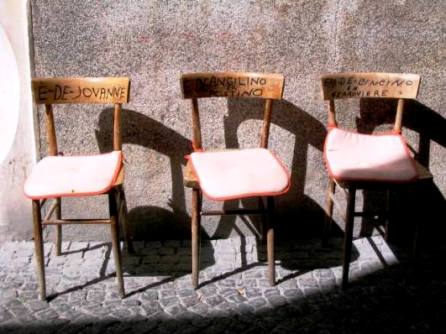
|



![]()